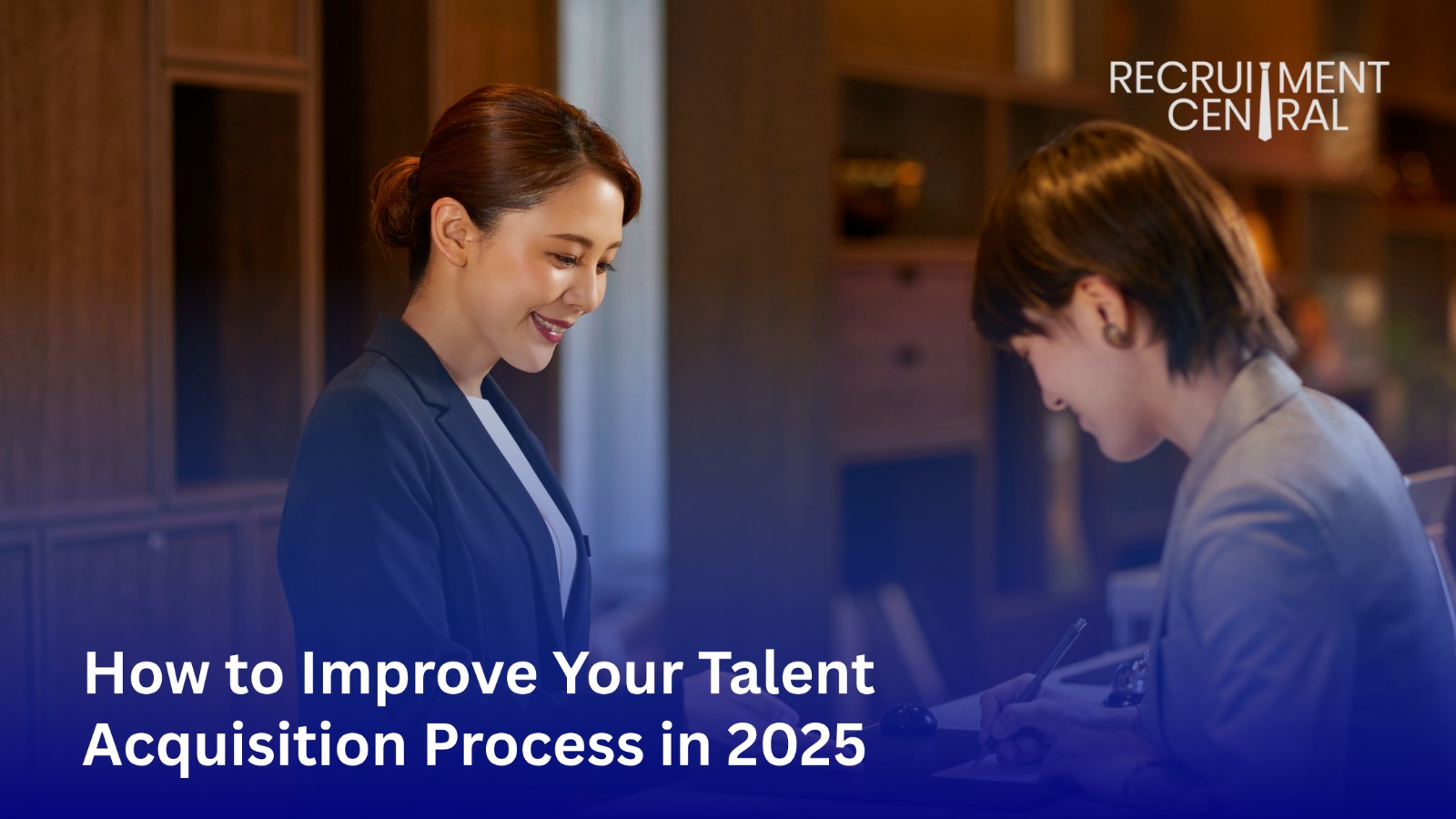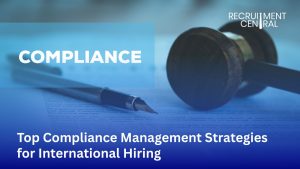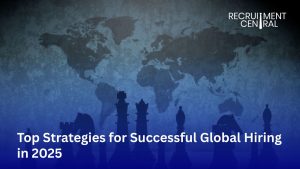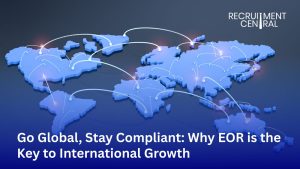Introduction
I was talking to a friend one day who runs a mid-sized tech firm in Singapore. He said they were doing great. Their product is great, and they have a solid team, but they are facing problems with hiring.
It’s not like they are not having people applying for the job, but the problem was, they couldn’t find people who really fit. Sometimes, hires didn’t have the skills, and other times. The problem was the culture mismatch.
The same thing kept happening and their team started feeling the pressure. I think this problem is so common nowadays and is not unusual anymore.
Because, in 2025, to grow a business, hiring means finding people who have the right mindset and actually want to grow with your company. The same is the case with the candidates. They are also looking for flexibility and a smooth experience in the job they are applying for.
So here’s the question: how do you actually build a hiring process that fulfills all of your demands and the people you want to hire? Let’s get into it with this article.
Leverage AI Without Losing the Human Touch
I have noticed that AI can be a game-changer in hiring, but only if you use it the right way. The right way is letting the tech take care of the usual stuff that takes time, instead of handing everything over to robots. This way, your team can actually focus on people.
We are all aware about the time that gets lost in sorting through resumes and going through interviews, but AI can do that in seconds. You can even use it to match candidates based on their skills and even how they communicate.
Like Unilever, for instance, started using AI for game-based assessments and video interviews that are scored by an algorithm. The result? They cut their hiring time by 75%. Plus, candidates actually liked the process more.
But here’s the catch- you can’t let the tech do all the talking. There are still times when people want a real interaction. You can let AI handle the repetitive stuff, but when it comes to understanding someone that still requires a human touch and is still your job.
Also Read: How to Use a Cost to Hire Employee Calculator Effectively
Shift to Skills-Based Hiring
You know what’s interesting? More and more companies are starting to care less about where someone went to school, and more about what they can actually do. It’s this whole “skills-first” mindset. And it’s changing the hiring processes.
Look at Google, for example. Sometime ago, they stopped requiring degrees for a lot of their roles. Now they look at how good a candidate is at solving problems and what kind of work they have previously done. Isn’t it a really good thing when it comes to hiring new people?
If you’re thinking about applying the same approach, here’s what makes it work:
- Make sure you ask your candidates to show how they will handle a certain problem. You can use real-world tasks to see how they fit in.
- While hiring, look for the skills that are important for the particular job. I don’t think there is any need for titles or fancy job histories.
- Also, try changing how you write your job descriptions. Instead of focusing only on degrees or past job titles, explain what the person will need to do well in the role and what success looks like.
Improve Candidate Experience & Employer Branding
If your hiring process is slow or feels impersonal, strong candidates may lose interest and leave. They have options. And if they don’t feel respected or informed along the way, they are gone.
Glassdoor actually found that 58% of people have turned down job offers just because they had a bad experience during the hiring process.
So what does a good experience look like?
- Quick, honest communication. If someone applies for an interview, they shouldn’t be left in the dark for weeks.
- A simple, smooth process. A smooth and simple process during onboarding is going to be a hit because no one wants to spend hours filling out forms or going through different interviews for just one role.
- Respect for time. Stick to timelines, give feedback quickly, and treat every candidate like their time matters.
- Real talk about culture. Be upfront. Tell the candidate what it is actually like to work with you and the company, and what the culture is.
And don’t forget, your employer brand is part of the experience too. Use platforms like LinkedIn and glassdoor and share posts about behind the scenes, or a day in the life videos on the platforms. These simple steps can make a really big difference in how you are perceived.
Support Career Growth and Internal Mobility
It is a very well-known fact that hiring new talent externally is expensive. Let me tell you a smart approach. It is to help your current people grow into new roles.
There’s data to back this up. LinkedIn’s Workplace Learning report showed that 67% of employees would stay longer if they had better career development opportunities. And why not? People want to grow.
So, how do you make that happen?
- Show employees clear career paths so they understand how they can grow in the company.
- Set up mentorship programs so they can learn from more experienced team members.
- Give training and learning support to help them build new skills and improve.
- Use an internal job board and encourage your team to apply for open roles, so they feel supported to move up or switch roles within the company.
Use Data to Improve Hiring Decisions
To build a solid talent acquisition process in 2025, your recruitment process should be like any other data-driven and outcome-focused process.
Here are the key metrics smart companies are watching:
- Time-to-hire: How long does it take to fill a role?
- Source of hire: Where are your best candidates coming from?
- Offer acceptance rate: How often are your offers accepted?
- Candidate satisfaction: How do applicants feel about the process?
- Cost-per-hire: What is the total cost to bring one person on board?
Build a DE&I-Driven Process
When it comes to hiring people, I think diversity, equity, and inclusion (DE&I) really matter.
When a company thinks of hiring people from different cultures and backgrounds, it leads to better teamwork, and I think they are also able to solve problems in a much better way.
Also, there is a study by McKinsey that showed that companies with more ethnic and gender diversity perform up to 36% better than those that don’t.
But I feel that making diversity, equity, and inclusion (DE&I) part of your hiring process takes more than good intentions. You need to build it into the process. Here’s how:
- Make a set structure for having your interviews so that every candidate has equal chance and is judged the same way. This helps keep things fair and unbiased.
- Write job descriptions that are inclusive. Avoid words like “rockstar” or “Ninja” that might make some people feel like the job isn’t for them.
- Look for candidates in different places, like job boards or communities that support people from underrepresented backgrounds.
- Train your hiring managers to notice and avoid bias.
Also Read: Guide to Choosing the Right Talent Management System
Smart Tools Make the Difference
Let me show you where tech really makes a difference in hiring, because going through resumes and manually tracking every step can slow you down fast. That’s where platforms like PeopleCentral come in.
PeopleCentral isn’t just any HR software; it is specifically designed for South East Asian businesses, and especially those navigating Singapore’s regulatory landscape.
Here’s what it actually does for you:
- Matches candidates automatically based on skills, so you’re not wasting time digging through stacks of resumes.
- Schedules interviews and sends offer letters without you having to email back and forth 20 times.
- Walks new hires through onboarding with a structured plan, no more guesswork or missing steps.
- Gives you dashboards and data, so you know what’s working and what’s not in your recruitment process.
- And it even has ABBY, a virtual assistant that answers common candidate questions in real time, so your HR team can focus on the big stuff.
Everything is built to be compliant too- PDPA, MOM, CPF, all covered.
Conclusion
In 2025, hiring is all about helping your business grow. The best companies use tools like AI, focus on skills, treat candidates well, support their own employees, and try to hire fairly.
If you want to hire good people and keep them, now is a good time to make your hiring process better. With the right steps, you can build a strong team for the future.







